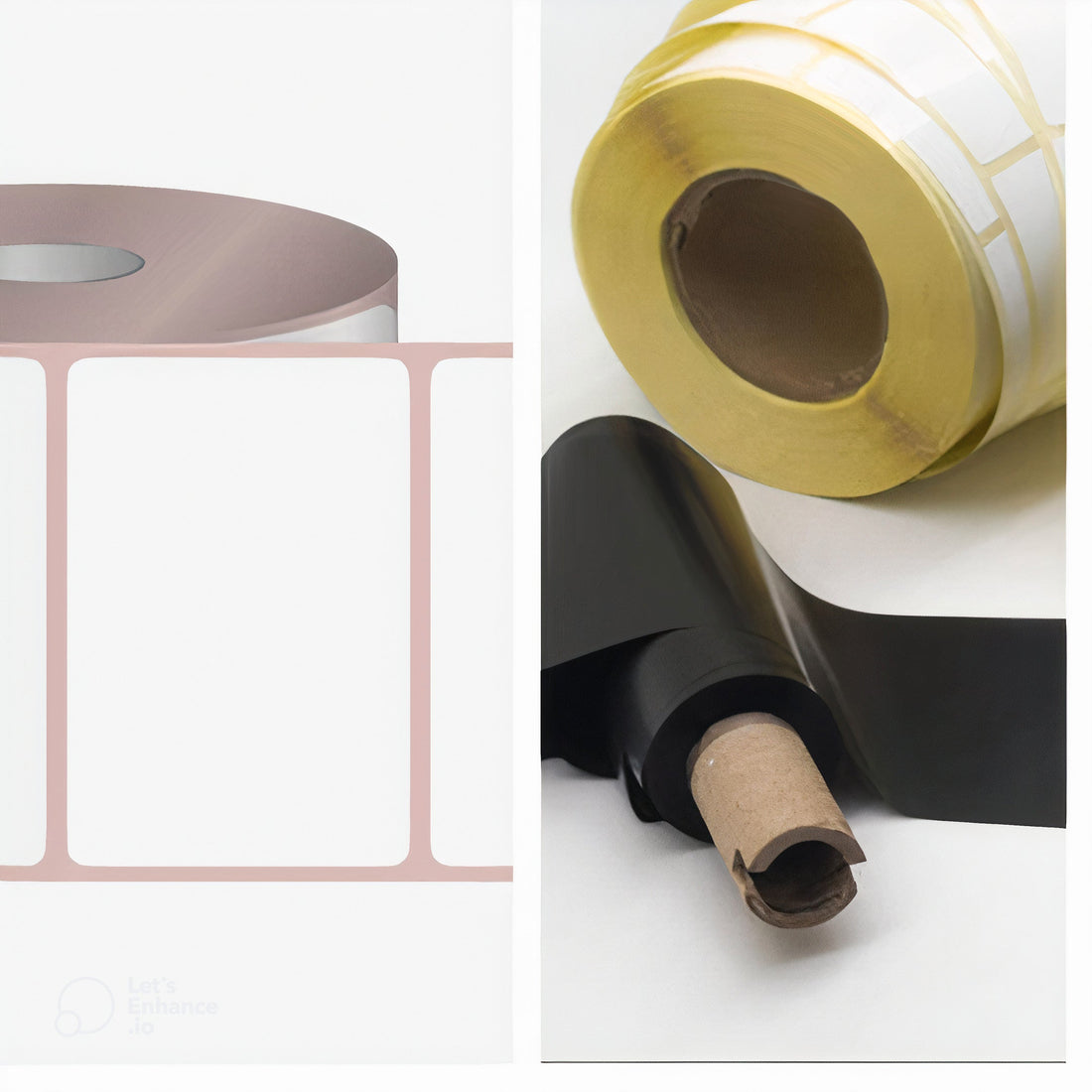
How Do Direct Thermal Labels Differ from Thermal Transfer Labels?
When it comes to choosing the right labels for your business, understanding the differences between direct thermal labels and thermal transfer labels is crucial. Both types of labels serve unique purposes and offer distinct benefits.
In this blog post, we’ll explore the key differences between these two types of labels to help you make an informed decision for your labeling needs.
Introduction
Labels play a vital role in many industries, from retail to manufacturing. They help with product identification, pricing, shipping, and more. However, not all labels are created equal. Direct thermal labels and thermal transfer labels are two popular options, but they function differently and are suited for different applications. Knowing the differences between these labels can help you select the best one for your business.
What Are Direct Thermal Labels?
Direct thermal labels are a type of label that uses heat-sensitive material to create an image. When the label passes through a direct thermal printer, the printer’s printhead applies heat to the label, causing the heat-sensitive coating to turn black and create the desired image or text.
Advantages of Direct Thermal Labels
1. Simplicity: Direct thermal labels are straightforward to use. There’s no need for ink, toner, or ribbon, which makes the printing process simple and cost-effective.
2. Cost-Effective: Since you don’t need additional supplies like ribbons or ink, direct thermal labels can save you money on printing supplies.
3. Quick Printing: Direct thermal printers are known for their speed, making them ideal for high-volume printing tasks.
Disadvantages of Direct Thermal Labels
1. Short Lifespan: Direct thermal labels are not durable and can fade over time, especially when exposed to heat, light, or chemicals.
2. Limited Applications: Due to their sensitivity to environmental factors, direct thermal labels are best used for short-term applications like shipping labels or receipts.
What Are Thermal Transfer Labels?
Thermal transfer labels use a different method for printing. Instead of heat-sensitive material, these labels require a ribbon coated with wax, resin, or a combination of both. The printer’s heat melts the coating on the ribbon, which then transfers the image onto the label.
Advantages of Thermal Transfer Labels
1. Durability: Thermal transfer labels are much more durable than direct thermal labels. They resist fading and are less affected by environmental factors, making them suitable for long-term use.
2. Versatility: These labels can be used on a wide range of materials, including paper, polyester, and polypropylene. This makes them ideal for various applications, from product labeling to industrial use.
3. High-Quality Prints: Thermal transfer labels produce sharp, clear images and text, which is essential for barcodes and detailed information.
Disadvantages of Thermal Transfer Labels
1. Cost: Thermal transfer labels require ribbons, which adds to the overall cost of the printing process.
2. Complexity: The need for ribbons makes the printing process slightly more complex compared to direct thermal printing.
Key Differences Between Direct Thermal and Thermal Transfer Labels
1. Printing Method: Direct thermal labels use heat-sensitive material, while thermal transfer labels use a ribbon and heat to transfer the image.
2. Durability: Direct thermal labels are less durable and best for short-term use. Thermal transfer labels are more durable and suited for long-term applications.
3. Cost: Direct thermal labels are generally more cost-effective due to the lack of ribbons. Thermal transfer labels have additional costs due to the need for ribbons.
4. Versatility: Thermal transfer labels offer more versatility in terms of material compatibility and application range.
Final thoughts
Choosing between direct thermal labels and thermal transfer labels depends on your specific needs. If you need labels for short-term use, such as shipping labels, and want to keep costs low, direct thermal labels are a great choice. However, if you need durable labels that can withstand harsh conditions and last longer, thermal transfer labels are the way to go.
At 4x6labels, we offer a wide range of both direct thermal and thermal transfer labels to meet your business’s unique needs. Explore our selection today and find the perfect labeling solution for your products.
